Critical Considerations in the Production of Modern Fish Feed: An Exhaustive Analysis of Eight Key Process Challenges
The rapid expansion of the global aquaculture industry, now the primary source of fish for human consumption, is fundamentally dependent on the availability of high-quality, sustainable, and cost-effective aquafeeds. The production of fish feed is a complex, multi-disciplinary endeavor that blends nutrition science, chemical engineering, mechanical processing, and quality assurance. Unlike feeds for terrestrial animals, aquafeeds must possess specific physical properties—such as water stability, controlled buoyancy, and appropriate pellet size—alongside precise nutritional profiles to meet the physiological needs of aquatic species living in a buoyant, three-dimensional environment. A failure at any stage of production can lead to reduced growth rates, poor feed conversion ratios (FCR), increased disease susceptibility, and significant water pollution. This treatise provides an in-depth examination of eight critical areas that demand vigilant attention in a modern fish feed production facility: 1) Raw Material Selection, Sourcing, and Quality Control; 2) Particle Size Reduction and Homogeneous Mixing; 3) The Extrusion Cooking Process: Parameters and Control; 4) Post-Extrusion Operations: Drying, Coating, and Cooling; 5) Nutritional Integrity and Heat-Labile Ingredient Management; 6) Physical Quality and Durability Testing; 7) Storage, Packaging, and Shelf-Life Management; and 8) Sanitation, Cross-Contamination, and Regulatory Compliance. Each section explores the underlying scientific principles, identifies common operational failures, details the consequences of process deviation, and outlines best practices for optimization and control. fish feed extruder machineA thorough understanding of these interconnected aspects is paramount for producing a feed that supports the health of the fish, the economic viability of the farm, and the sustainability of the industry.
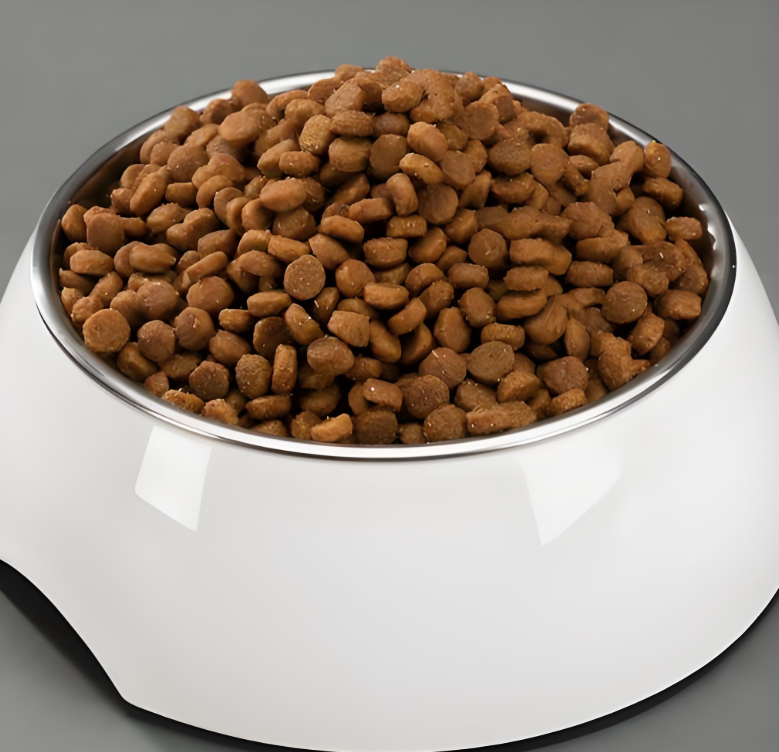
1. Raw Material Selection, Sourcing, and Quality Control: The Foundation of Nutritional Excellence
The quality of the final feed pellet is irrevocably determined by the quality and consistency of its raw materials. The adage “garbage in, garbage out” is profoundly applicable. A sophisticated manufacturing process cannot compensate for inferior or inconsistent ingredients.
1.1. Ingredient Sourcing and Sustainability Pressures
The aquafeed industry is undergoing a significant transformation in its raw material base. fish feed extruder machineTraditional reliance on fishmeal and fish oil is being challenged by sustainability concerns and price volatility.
- Fishmeal and Fish Oil: These remain the gold standard for many species, particularly carnivorous fish like salmon and trout, due to their excellent amino acid profile, high digestibility, and rich content of omega-3 long-chain polyunsaturated fatty acids (EPA and DHA). Critical considerations include the source (e.g., trimmings vs. whole fish), species, freshness, fish feed extruder machineand certification from bodies like the Marine Stewardship Council (MSC) or the IFFO Responsible Supply standard.
- Alternative Protein and Lipid Sources: The drive for sustainability has accelerated the use of plant-based proteins (soybean meal, corn gluten, rapeseed meal), terrestrial animal by-products (poultry by-product meal), and novel ingredients like insect meal, single-cell proteins (yeast, bacteria), and algal oils.
- Anti-Nutritional Factors (ANFs): Plant proteins often contain ANFs such as trypsin inhibitors, lectins, and phytic acid. These can impair nutrient digestion, absorption, and utilization, leading to reduced growth and health issues. Sourcing processed ingredients (e.g., fermented soybean meal, protein concentrates) where ANFs are reduced is crucial.
- Amino Acid Profile: Alternative proteins must be carefully blended to match the amino acid requirements of the target species. Lysine and methionine are often the first limiting amino acids and may require supplementation with synthetic forms.
- Palatability: Some alternative ingredients can reduce feed palatability. The inclusion of palatability enhancers, such as betaine or krill hydrolysates, may be necessary.
1.2. Incoming Quality Assurance: Rigorous Inspection Protocols
Every batch of raw material must be subjected to a rigorous inspection protocol before being accepted into the warehouse.
- Visual and Olfactory Inspection: Check for signs of mold,fish feed extruder machine insect infestation, unusual color, and off-odors indicative of rancidity or spoilage.
- Análisis proximal: Rapid in-house or external laboratory analysis to determine key nutritional components:
- Contenido de humedad: Critical for calculating dry matter and preventing microbial growth during storage.
- Crude Protein: Typically measured via the Kjeldahl method (Nitrogen x 6.25).
- Crude Fat: Measured by solvent extraction (e.g., Soxhlet method).
- Crude Fiber and Ash.
- Advanced and Functional Testing:
- Mycotoxin Screening: Using ELISA test kits or HPLC to detect aflatoxins, ochratoxin, and other fungal toxins that can be devastating to fish health, even at low levels.
- Peroxide Value (PV) and Anisidine Value (AV): These measure primary and secondary oxidation products in fats and oils, providing an early warning of rancidity.
- Urease Activity: For soybean meal, this indicates the level of trypsin inhibitor destruction during processing. High urease activity suggests under-processing and high ANF levels.
- Protein Solubility: A test for over-processed ingredients, which can reduce protein digestibility.
1.3. Consequences of Poor Raw Material Control
- Nutritional Imbalance: Formulations will be inaccurate, leading to nutrient deficiencies or excesses.fish feed extruder machine
- Reduced Palatability and Feed Intake: Fish will reject the feed, leading to wasted feed and uneven growth.
- Health Problems: Mycotoxins, rancid fats, and bacterial contamination can cause liver damage, immunosuppression, and mortality.
- Inconsistent Processing: Variable moisture, oil, or protein content in ingredients will disrupt the extrusion process, leading to poor pellet quality.
1.4. Best Practices for Raw Material Management:
- Supplier Qualification and Certification: Work only with reputable suppliers who have robust HACCP and quality management systems. Conduct regular audits.
- Clear Raw Material Specifications: Establish and enforce detailed technical data sheets for every ingredient.
- First-In-First-Out (FIFO) Warehouse Management: Ensure proper stock rotation to prevent ingredient degradation.
- Proper Storage Conditions: Store ingredients in cool, dry, and well-ventilated areas. Bulk silos and bins should be regularly cleaned to prevent cross-contamination and pest harborage.
2. Particle Size Reduction and Homogeneous Mixing: Achieving a Uniform Matrix
The initial stages of feed manufacturing are dedicated to creating a perfectly homogeneous powder blend. fish feed extruder machineThe consistency of this pre-mix is the foundation for every pellet having the identical nutritional composition.
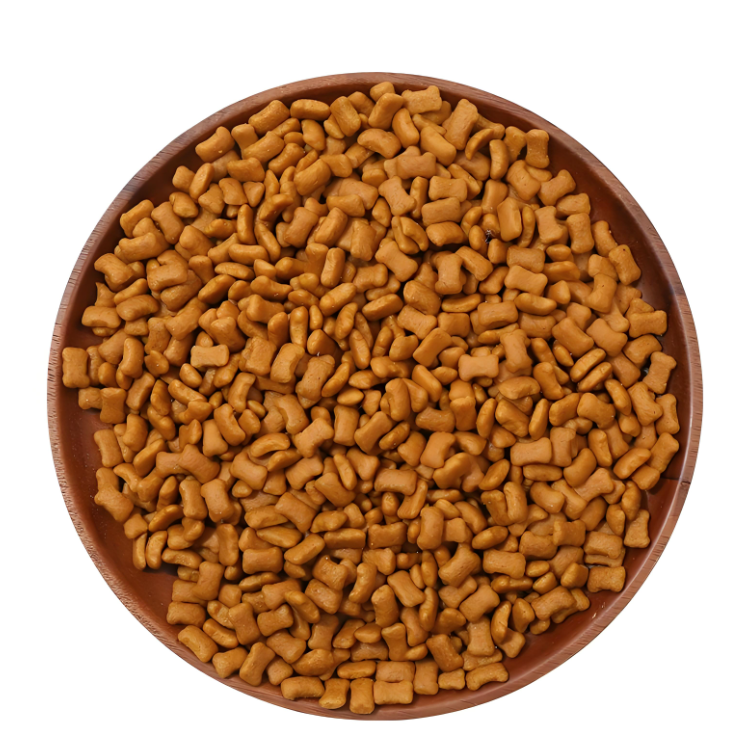
2.1. The Science of Grinding
Grinding, or particle size reduction, is primarily accomplished using hammer mills or roller mills.
- Objective: To create a uniform particle size that optimizes both mixing efficiency and the subsequent extrusion process.
- Impact of Particle Size:
- Too Coarse: Particles will segregate by size and density during handling, leading to an inhomogeneous mix. Coarse particles can also clog dies during extrusion and create weak points in the pellet, reducing durability.
- Too Fine: Excessive fines can increase dust loss, reduce the energy efficiency of grinding, and negatively affect pellet durability by creating too dense a matrix that hinders steam flashing during extrusion. However, a finer grind generally improves starch gelatinization and nutrient digestibility.
- Optimal Range: The ideal geometric mean particle size for most aquafeeds is between 80 and 150 microns. The particle size distribution should be as narrow as possible.
2.2. The Art and Science of Mixing
Mixing is a critical unit operation where micro-ingredients (vitamins, minerals, synthetic amino acids, medications) are uniformly distributed throughout the macro-ingredients.
- Mixer Types: Horizontal ribbon mixers and paddle mixers are most common due to their high efficiency.
- Critical Parameters for Homogeneity:
- Mixer Efficiency: Determined by a Coefficient of Variation (CV), which should be less than 5-7% for a well-designed and operated system. This is verified by a “mixer efficiency test,” where a tracer (e.g., salt or a colored dye) is added, and multiple samples are taken from the batch to analyze tracer concentration.
- Mixing Time: There is an optimal mixing time. Under-mixing results in segregation of ingredients. fish feed extruder machineOver-mixing in a horizontal mixer can cause “demixing” or segregation due to differences in particle size and density.
- Sequence of Addition: A “sandwich” or “step-wise” addition method is often used. A portion of the major carrier (e.g., ground grain) is added first, followed by the micro-ingredients, and then the remainder of the macro-ingredients. This ensures the micro-ingredients are diluted and dispersed effectively.
2.3. Consequences of Poor Grinding and Mixing
- Nutrient Hotspots and Coldspots: Uneven distribution of vitamins, minerals, or medications can lead to toxicity in some fish and deficiency in others.
- Poor Pellet Quality: Inhomogeneous mixture causes inconsistent rheology in the extruder, leading to variable expansion, poor durability, fish feed extruder machineand die blockage.
- Wasted Expensive Ingredients: Inconsistent mixing means the formulated levels of critical, expensive additives are not achieved, wasting money and compromising animal performance.
2.4. Best Practices for Grinding and Mixing:
- Screen Maintenance: Regularly inspect and replace hammer mill screens to maintain the target particle size.
- Routine Mixer Testing: Conduct mixer efficiency tests quarterly or after any maintenance on the mixer.
- Liquid Addition: Add liquids (e.g., oil, phospholipids) after the dry mixing is complete, using a dedicated liquid-coating mixer to prevent the formation of sticky balls that disrupt homogeneity.
- Minimize “Dead Time”: Ensure the mixer is discharged completely and quickly into the holding bin to prevent segregation.
3. The Extrusion Cooking Process: Parameters and Control
The extruder is the heart of modern aquafeed production. It is a high-shear, high-temperature, short-time bioreactor that transforms the powder mix into a cooked, shaped, and textured pellet. Controlling this process is the single most complex task in feed manufacturing.
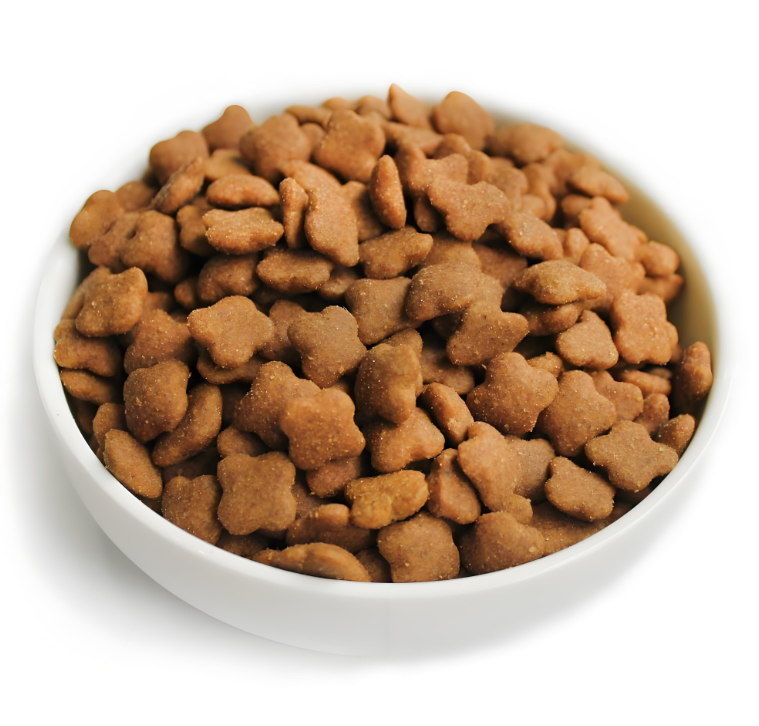
3.1. Preconditioning: The First Step of Cooking
The preconditioner is a continuous, stirred tank reactor where the dry mix is hydrated and pre-heated with direct steam.
- Objective: To begin starch gelatinization and protein denaturation, uniformly distribute moisture and heat, and reduce the mechanical energy requirement and wear in the extruder barrel.
- Critical Parameters: Moisture addition (to ~20-28%), steam injection (raising temperature to 80-95°C), and retention time (ideally 2-4 minutes in a long-term preconditioner).
3.2. The Extrusion Barrel: A Multi-Functional Reactor
Inside the barrel, the material is subjected to intense heat, pressure, and shear.
- Gelatinización del almidón: The crystalline structure of starch is destroyed, and the granules swell and absorb water. This is essential for digestibility and acts as a binding agent.
- Desnaturalización de proteínas: Proteins unfold, improving digestibility and destroying heat-labile anti-nutritional factors.
- The Superheated Melt: The product becomes a viscous, plasticized “dough” under high pressure (20-40 bar).
3.3. Critical Control Parameters in Extrusion
- Specific Mechanical Energy (SME): This is the amount of mechanical energy from the motor imparted to the product, calculated as: SME (kWh/t) = (Motor Power (kW) * Motor Load (%) ) / Mass Flow Rate (t/h). SME is a master variable controlling expansion and degree of cook. High SME creates more expanded, floating feeds; low SME produces dense, sinking feeds.
- Contenido de humedad: The total moisture in the barrel (from preconditioning and any barrel injections) plasticizes the mixture. Higher moisture reduces viscosity and SME, yielding a denser pellet.
- Barrel Temperature Profile: Different zones of the barrel are heated or cooled to guide the progression of cooking.
- Diseño del troquel: The geometry of the die holes (Length/Diameter ratio) determines final pressure and shear. High L/D ratios create more durable, denser pellets.
3.4. Consequences of Poor Extrusion Control
- Inconsistent Buoyancy: Poor control over SME and moisture will result in a mix of floating, slow-sinking, and fast-sinking pellets from the same batch.
- Poor Water Stability: Under-cooked pellets will disintegrate rapidly, polluting the water.
- Nutrient Destruction: Excessive heat and shear can destroy heat-sensitive amino acids (e.g., lysine) and vitamins.
- Die Blockage and Instability: Inconsistent feed or improper formulation can cause the extruder to “surge,” leading to variable pellet size and potential machine damage.
3.5. Best Practices for Extrusion Control:
- Monitor and Record Key Variables Continuously: Screw speed, motor load, temperatures, pressures, and feed rate.
- Calculate SME in Real-Time: Use this as a primary control parameter.
- Conduct Regular Die and Screw Inspections: Check for wear that can alter processing conditions.
- Implement Standardized Procedures for start-up, shutdown, and product changeover to ensure consistency.
4. Post-Extrusion Operations: Drying, Coating, and Cooling
The extruder produces a soft, moist, and hot pellet that is highly perishable. Downstream processing is essential to create a shelf-stable, nutritionally complete product.
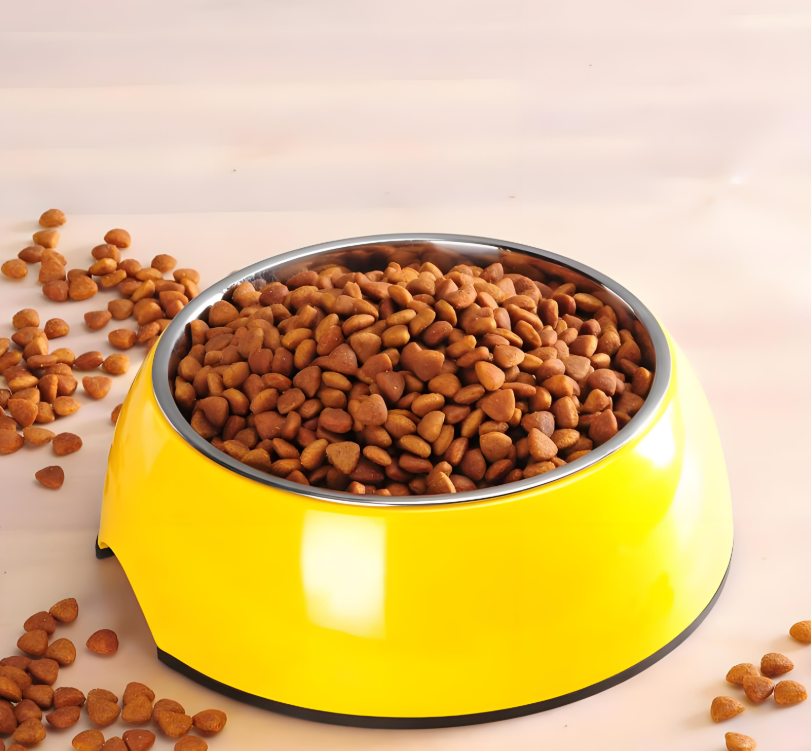
4.1. Drying: Achieving Shelf-Stability
- Objective: To reduce moisture from ~25% post-extrusion to a shelf-stable level of ~8-10%.
- Technology: Multi-pass, continuous dryers using hot, dehumidified air.
- Critical Considerations:
- Temperature and Airflow: Must be controlled to dry the pellet uniformly without “case-hardening,” where a hard shell forms, trapping moisture inside and leading to mold growth in storage.
- Tiempo de retención: Must be sufficient to achieve the target moisture content throughout the pellet.
4.2. Coating: Delivering Essential Lipids and Additives
- Objective: To apply heat-sensitive ingredients—primarily oils (for energy and omega-3s), vitamins, pigments (astaxanthin for salmon),fish feed extruder machine and enzymes—that would be destroyed in the extruder.
- Vacuum Coating (The Gold Standard): Dried pellets are placed in a sealed drum, and a vacuum is drawn. This removes air from the pores of the pellet. When liquid fat is introduced, the vacuum is released, forcing the oil deep into the pellet’s core.
- Ventajas: Allows for very high fat inclusion (>35%), minimizes lipid leaching into the water, and reduces dust.
- Atmospheric Coating: A simpler process of spraying oil onto tumbling pellets. It is less efficient and results in a surface coating that is more prone to oxidation and leaching.
4.3. Cooling: The Final Stabilization
- Objective: To bring the pellet temperature down to within 5°C of ambient temperature after drying and coating.
- Rationale: Packaging warm pellets causes condensation, which leads to mold growth and rapid spoilage.
4.4. Consequences of Poor Downstream Processing
- Spoilage and Mold: Inadequate drying or cooling leads to mycotoxin formation.
- Nutrient Leaching and Rancidity: Surface-coated oils leach into the water, wasting nutrients and polluting the environment. They are also more susceptible to oxidation.
- Dust and Fines: Poor coating and handling post-dryer create dust, which represents a loss of product and can irritate fish gills.
4.5. Best Practices for Downstream Processing:
- Monitor In-line Moisture: Use NIR sensors post-dryer to ensure moisture targets are met.
- Calibrate Fat Application: Regularly check the accuracy of fat pumps and scales.
- Ensure Proper Cooler Operation: Verify airflow and retention time in the cooler.
5. Nutritional Integrity and Heat-Labile Ingredient Management
The harsh conditions of extrusion, while necessary for cooking and shaping, pose a significant threat to essential nutrients.

5.1. Identifying Heat-Labile Nutrients
- Vitamins: Vitamin C (ascorbic acid) is the most labile, followed by Thiamine (B1), Vitamin A, and others.
- Amino Acids: The epsilon-amino group of Lysine is highly reactive and can form complexes with reducing sugars (Maillard reaction), rendering it unavailable.
- Enzymes, Probiotics, and Some Medications: These are organic molecules that are denatured by heat.
5.2. Strategies for Protection
- Over-fortification: A common but imprecise method where extra amounts of sensitive nutrients are added to the pre-mix to account for expected processing losses. This requires a deep understanding of the destruction kinetics for each specific process.
- Use of Stabilized Forms:
- Vitamin C: Use coated ascorbic acid (e.g., ethyl cellulose) or more stable forms like ascorbyl polyphosphate.
- Micro-encapsulation: Nutrients are encapsulated within a protective matrix (e.g., fat, gum) that melts or dissolves after consumption.
- Post-Extrusion Application (Post-Pelleting Liquid Application – PPLA): This is the most effective strategy. Heat-labile ingredients are sprayed onto the pellets after the dryer and cooler, often in the vacuum coater. This ensures near-100% retention of potency.
5.3. Consequences of Poor Nutrient Management
- Nutrient Deficiencies: Even if the formulation is perfect on paper, the fish may experience deficiencies of critical vitamins and amino acids, leading to poor growth, spinal deformities, and impaired immune function.
- Wasted Cost: Over-fortification without accurate destruction data wastes money on expensive micronutrients.
5.4. Best Practices for Nutrient Management:
- Conduct Periodic Stability Tests: Analyze nutrient levels in the finished feed and compare them to the formula to calculate actual destruction rates.
- Invest in PPLA Technology: For high-value feeds, this is a necessity, not a luxury.
- Work with Ingredient Suppliers: Utilize their expertise on the most stable forms of vitamins and minerals available.
6. Physical Quality and Durability Testing
The physical properties of the pellet are as important as its chemical composition for efficient feeding and minimal waste.
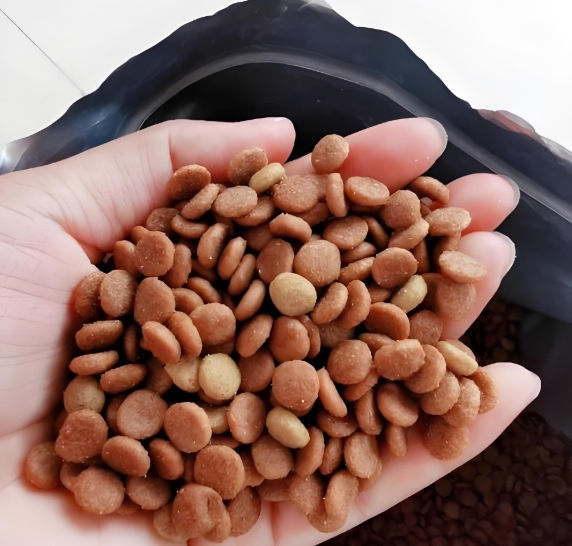
6.1. Key Physical Parameters
- Pellet Durability Index (PDI): Measured using a tumbling box (e.g., Holmen tester, Pfost tester). A high PDI (>95%) indicates a pellet that can withstand handling and transportation without breaking apart.
- Hardness: Measured with a texture analyzer. The required hardness varies by species; for example, shrimp need a softer pellet than large finfish.
- Estabilidad en el agua: The time a pellet retains its integrity in water. This is critical for slow-feeding species like shrimp and bottom-feeders. It is tested by submerging pellets in water and visually assessing disintegration over time.
- Bulk Density and Buoyancy: Determines whether the feed floats, sinks slowly, or sinks rapidly.
6.2. Consequences of Poor Physical Quality
- Nutrient Leaching and Water Pollution: Fines and disintegrated pellets release nutrients into the water, promoting algal growth and deteriorating water quality.
- Economic Loss: fish feed extruder machine Broken pellets (fines) are not consumed by fish and represent a direct economic loss and wasted FCR.
- Uneven Feeding: Fines can be ignored by fish or, if ingested, provide an imbalanced diet.
6.3. Best Practices for Physical Quality Control:
- Implement Routine In-line Testing: Test PDI and hardness on every batch.
- Conduct Species-Specific Stability Tests: For shrimp feeds, conduct formal water stability tests for 2-4 hours.
- Correlate Physical Data with Process Parameters: Use PDI results to fine-tune extrusion parameters like SME and moisture.
7. Storage, Packaging, and Shelf-Life Management
The final challenge is to preserve the quality of the feed until it reaches the farm.
7.1. Enemies of Feed Quality in Storage
- Oxidation: The primary cause of spoilage. Oxygen in the air reacts with unsaturated fats in the feed, leading to rancidity, which destroys fat-soluble vitamins and creates off-flavors and toxic compounds.
- Moisture/Humidity: Absorbs moisture, leading to mold growth and caking.
- Pests: Insects and rodents can contaminate and consume feed.
- Temperatura: High temperatures accelerate oxidation and vitamin degradation.
7.2. Protective Packaging and Storage
- Multi-Wall Paper Bags: With plastic liners to provide a barrier against moisture and oxygen.
- Bulk Bags (Big Bags): Must be stored in a cool, dry, pest-free warehouse.
- Modified Atmosphere Packaging (MAP): For premium feeds, the air in the bag is replaced with nitrogen to prevent oxidation.
7.3. Consequences of Poor Storage
- Rancidity: Leads to liver damage, immunosuppression, and poor growth in fish.
- Vitamin Loss: Potency declines over time, especially under poor storage conditions.
- Mold and Mycotoxins: A direct health hazard.
7.4. Best Practices for Storage and Packaging:
- Implement FIFO: Enforce strict stock rotation.
- Control Warehouse Environment: Maintain low temperature and humidity.
- Use Oxygen Scavengers: Include small sachets in bags to absorb residual oxygen.
- Establish a Clear Shelf-Life Policy: Label production dates and expiration dates clearly.
8. Sanitation, Cross-Contamination, and Regulatory Compliance
A feed mill must be a clean, safe, and compliant facility to ensure product safety and integrity.
8.1. Sanitation and Pest Control
- Preventive Programs: Implement a documented and rigorous program for cleaning (e.g., removal of dust and spillage) and pest control (rodents and insects).
- Dust Control: Dust is a primary vector for pathogens and pests. Effective aspiration systems are critical.
8.2. Cross-Contamination Prevention
This is especially critical when producing medicated feeds or feeds for different species with different ingredient restrictions (e.g., avoiding ruminant proteins in fish feed).
- Sequential Production: Schedule production from least to most concentrated or from non-medicated to medicated.
- Physical Cleaning (“Pigging”): Use “wash-out” batches of a neutral material (e.g., corn meal) to purge the system between different product runs.
- Dedicated Lines: For high-risk situations, use dedicated production lines or equipment.
8.3. Regulatory Compliance

- HACCP (Hazard Analysis Critical Control Point): A mandatory, systematic preventive approach to food safety. The feed mill must identify biological, chemical, and physical hazards and establish controls at critical points (e.g., mycotoxins in raw materials, metal detection in finished feed).
- Traceability: The system must be able to trace any batch of finished feed back to its raw material lots and forward to the customer.
8.4. Consequences of Non-Compliance
- Product Recalls and Legal Liability: Contaminated or mislabeled feed can lead to massive recalls and legal action.
- Drug Residues in Fish: Improper handling of medicated feeds can lead to illegal residues in harvested fish, creating a public health crisis and damaging market access.
- Brand Destruction: A single major quality or safety incident can destroy a company’s reputation.
8.5. Best Practices for Compliance and Safety:
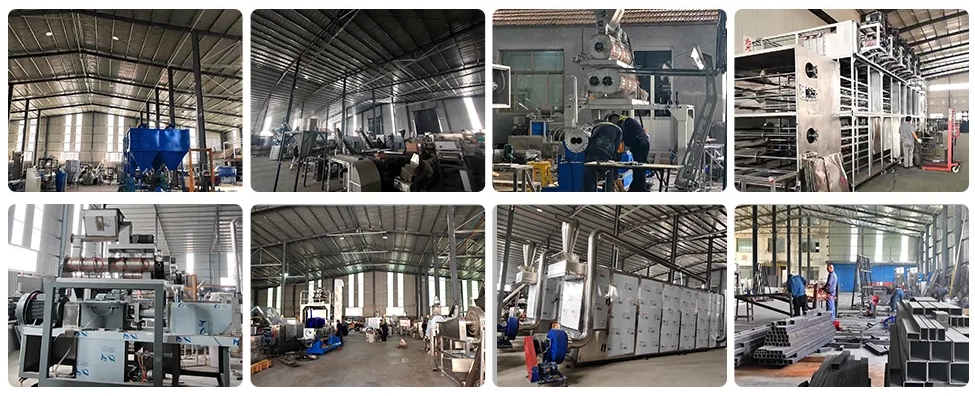
- Develop and Maintain a HACCP Plan.
- Train All Employees on GMPs (Good Manufacturing Practices) and sanitation procedures.
- Conduct Regular Internal Audits.
- Install and Monitor Metal Detectors or X-ray machines at the end of the production line.
The production of high-quality fish feed is a symphony of precision, where biology, chemistry, and engineering converge. The eight areas detailed herein are not isolated checkboxes but deeply interconnected pillars supporting the entire structure of modern aquaculture.fish feed extruder machine A failure in raw material quality cannot be rectified by perfect extrusion; excellent nutrition is wasted if the pellet disintegrates in water; and a perfectly manufactured feed becomes a liability if it becomes rancid in storage or contaminated with pathogens. Success, therefore, demands a holistic, data-driven, and vigilant approach across all domains, from the initial supplier audit to the final delivery of a stable, safe, and nutritious feed to the farm. It is this relentless, integrated focus on quality that ultimately drives the efficiency, sustainability, and profitability of the global aquaculture industry.







